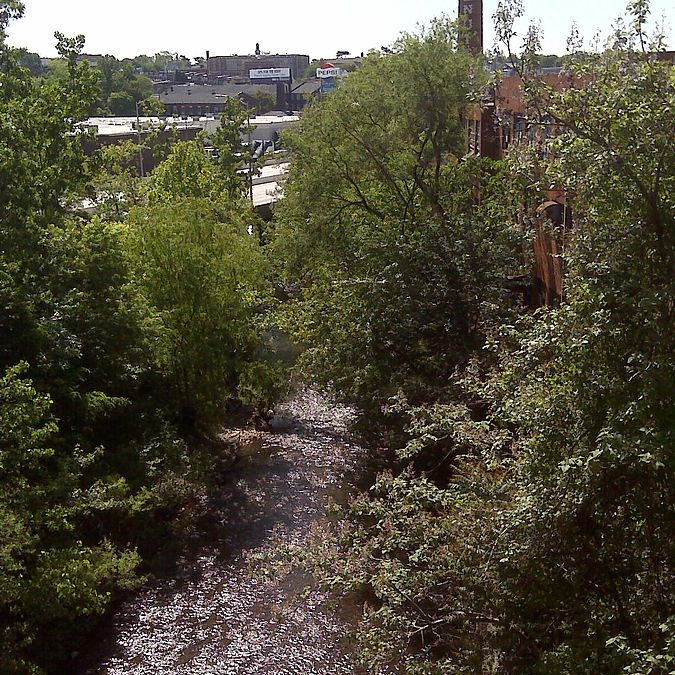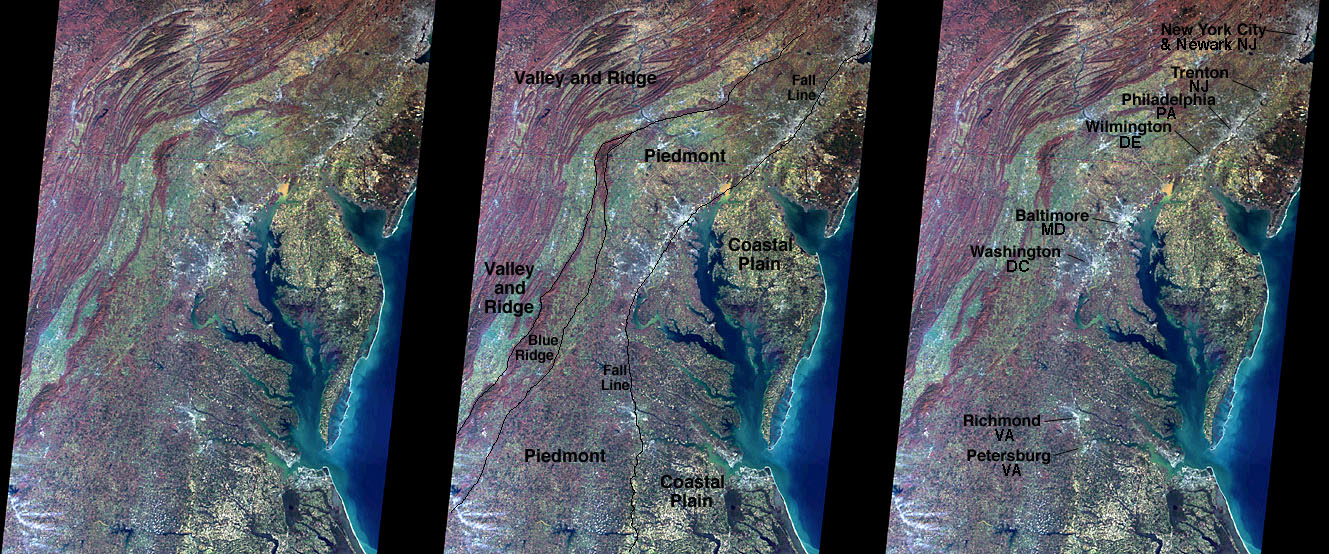 I have a mild case of fatal familial obsessive-compulsive disorder. (At least, if that were real I’d have it.) Today’s obsession is the Fall Line.
I have a mild case of fatal familial obsessive-compulsive disorder. (At least, if that were real I’d have it.) Today’s obsession is the Fall Line.
It’s the line that runs through the big east coast cities — New York City, Trenton, Philadelphia, Wilmington, Baltimore, Washington D.C., Richmond, all the way down to Columbia SC and Tuscaloosa AL. And you thought the connecting line was I-95, didn’t you. (I know you didn’t think that because you didn’t think about it at all, why would you.) But I-95 only follows the Fall Line. The Fall Line is a real physical line in the bones of the continent. It’s the reason all those cities were born where they were.
As usual, my first obsession was with the prettiness of the name. Fall Line. I looked it up and found out that it was the point at which the east coast rivers all had rocky falls that couldn’t be sailed past. So the rivers all had falls, so what? why dignify that with a name? so I just kept loving the name and not understanding what it meant. But now I’m writing a story that requires some brain work on the Fall Line and besides, it runs straight through Baltimore. (You could see it on a map if I-95 went through Baltimore instead of around it because Senator Barbara Mikulski made it do that.) I’m sitting next to the Fall Line right now; my office is in a converted sail cloth mill that is one of a string of mills running along the Jones Falls. The picture at the top of this page is of the local falls and a brick mill just upstream from mine.
 The Fall Line turns out to be a crystalline cliff — ok, a steep dip – that 200 million years ago was the coast of the continent. To its inland west is the unholy cat’s breakfast of hard metamorphic rocks that resulted when Africa and North America slowly ground into each other, moved apart leaving bits behind, bumped back together, over and over, and raising mountains every time; the current ones are the Appalachians. To its east is flat, boring clay and mud and sand that took a couple hundred million years to wash off the mountains and build into the coastal plain. The line between the hard rock and soft mud is noticeable only because rivers flow generally east out of the mountains and across the plain to the ocean; and rivers trying to cut through rock are narrow and shallow compared to rivers cutting wide and deep through mud. Where the rivers change from being narrow and shallow to wide and deep, that is, where the rivers fall off the crystalline cliff, they have falls.
The Fall Line turns out to be a crystalline cliff — ok, a steep dip – that 200 million years ago was the coast of the continent. To its inland west is the unholy cat’s breakfast of hard metamorphic rocks that resulted when Africa and North America slowly ground into each other, moved apart leaving bits behind, bumped back together, over and over, and raising mountains every time; the current ones are the Appalachians. To its east is flat, boring clay and mud and sand that took a couple hundred million years to wash off the mountains and build into the coastal plain. The line between the hard rock and soft mud is noticeable only because rivers flow generally east out of the mountains and across the plain to the ocean; and rivers trying to cut through rock are narrow and shallow compared to rivers cutting wide and deep through mud. Where the rivers change from being narrow and shallow to wide and deep, that is, where the rivers fall off the crystalline cliff, they have falls.
So Europeans trying to settle North America by sailing up the Potomac couldn’t get past the Great Falls and stopped at Washington, DC; sailing up the Susquehanna, they had to stop at Baltimore; sailing up the Delaware River they had to stop at Wilmington, up the Schuylkill they stopped at Philadelphia – you get the idea.
The Europeans didn’t fight the Fall Line. Falls along the Line powered mills and eventually hydroelectricity. Wide river estuaries led to shipping routes along the east coast. The Europeans built cities. Win-win.
My real obsession is with geology’s sheer poetry. Continents do what they do, rivers do what they do, humans do what they do. And it all ends up in a clear bright white line that maps the cities of the east and the coast on our ancient continent.
———–
Most of the information here came from Martin Schmidt’s Maryland’s Geology and John Means’ Roadside Geology of Maryland, Delaware, and Washington, DC. The latter is one of part of the series of Roadside Geology books that covers most states and are as essential to your car trunk as a jack and jumpers.
______
Photos: local falls along the Fall Line by Onore Baka Sama via Wikimedia; tryptich of the geological provinces of the east coast and the Fall Line (you can enlarge it by clicking) by University of Georgia’s Dept. of Geology, Dr. Bruce Railsback‘s webpage for GEOL 1122, Earth’s History of Global Change, a site I can’t recommend highly enough. Dr. Railsback thinks the string of Fall Line cities looks like white dusting of snow.
I love this and also love “unholy cat’s breakfast”.
Coming from you, Cameron, that’s a rare compliment and I appreciate it.